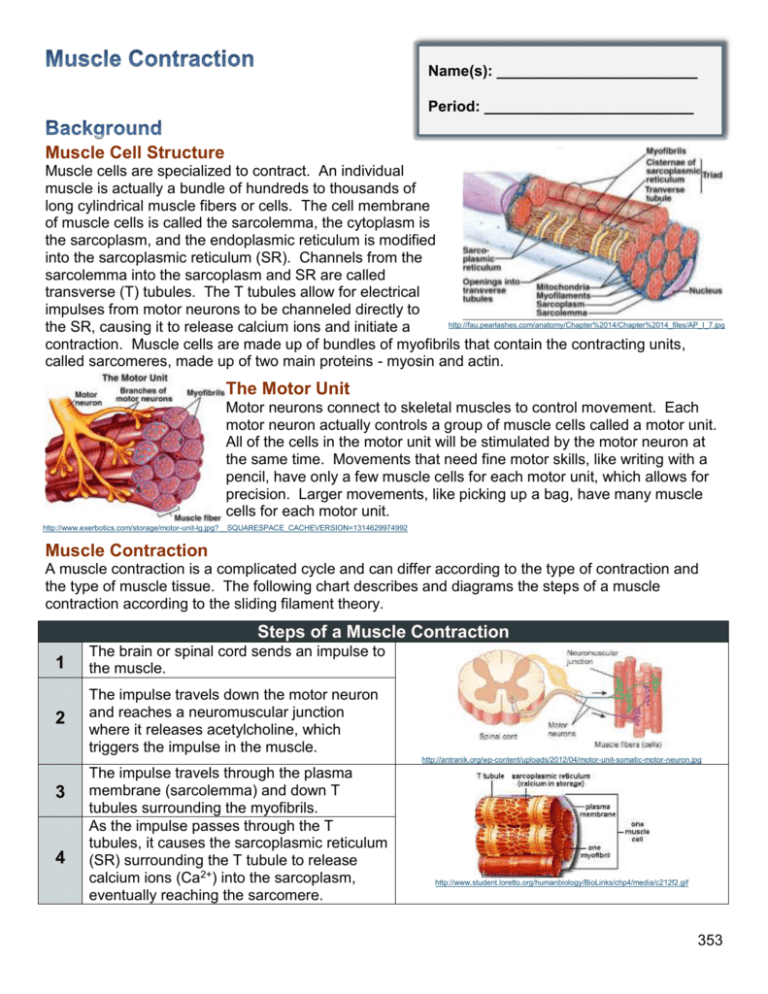Muscle Contraction and Locomotion Biology Diagrams This entire process shortens the sarcomere, which is functional unit of a muscle cell. You can read a textbook, or even study the simplified steps above, but watching it in action is very helpful. Here's a short snippet of a simulated muscle contraction showing the parts of a muscle cell and what happens during a muscle contraction.

To initiate muscle contraction, tropomyosin has to expose the myosin-binding site on an actin filament to allow cross-bridge formation between the actin and myosin microfilaments. The first step in the process of contraction is for Ca ++ to bind to troponin so that tropomyosin can slide away from the binding sites on the actin strands. This

Muscle contraction Biology Diagrams
This is a chemical synapse where a motor neuron transmits a signal to muscle fiber to initiate a muscle contraction. The process by which a signal is transmitted at a neuromuscular junction is illustrated in Figure \(\PageIndex{2}\). The sequence of events begins when an action potential is initiated in the cell body of a motor neuron, and the

The complex process leading to muscle contraction, called excitation-contraction coupling, begins when an action potential causes depolarization in the myocyte membrane. The depolarization is spread via the transverse (T) tubules, invaginations of the muscle cell membrane, that help spread depolarization signals to the entire muscle fiber. Muscle contraction is the tightening, shortening, or lengthening of muscles when you do some activity. It can happen when you hold or pick up something, or when you stretch or exercise with weights. Learn how motor neurons signal skeletal muscle fibers to contract and relax through the neuromuscular junction, excitation-contraction coupling, and calcium handling. Explore the structure and function of the sarcoplasmic reticulum, T-tubules, and cross-bridge cycling.

Physiology, Muscle Contraction Biology Diagrams
Learn about the process of muscle contraction, the proteins involved, the types of contraction, and the mechanisms proposed to explain it. Find out how actin and myosin filaments slide, how Ca++ ions and ATP are involved, and how nerve impulses trigger muscle contraction. Learn how actin and myosin filaments slide past each other to produce muscle tension and shorten the sarcomere. See diagrams, analogies, and examples of the sliding filament theory and its molecular mechanisms.
